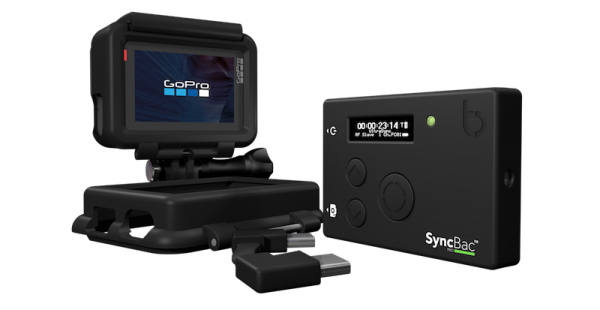Case Study
Medical documentaries: Preventing emergencies in the edit suite
The changing face of television medical documentaries
In recent years there’s been a distinct shift in the format of medical documentaries and how they are filmed. The antiseptic setting of the hospital wards has been abandoned as filming planned surgical procedures and carefully crafted reconstructions have become legacies of this genre of programme-making. What we’re seeing more of is the gritty, fast-paced reality of what happens the moment 999 is called to an accident or emergency. This has led to the growth of shows like Inside the Ambulance and 999: On the Frontline – two shows the Timecode Systems team has worked with to reduce the time and cost of postproduction by introducing a more efficient approach to syncing footage when filming using multiple cameras and separate sound.
There’s no such thing as an average shoot
Unpredictable, unscripted and packed with unrepeatable action, the appeal of this new style of medical documentary is that they document the unfiltered reality of what happens during a day in the life of an emergency services crew. Making a great show depends on the ability of the production team to capture the full story, from the details of the scene of the emergency and the difficult decisions that are made, to the reactions and emotions provoked. To achieve this, this type of show relies heavily on the POV shot, for example, GoPros rigged in the cab and back of the ambulance vehicles, and cameras mounted on the chests and shoulders of members of the crews. With no opportunity to stop, rewind and re-shoot the action, this ensures each angle is covered and nothing is missed.
Reducing drama behind the scenes
GoPro cameras make this style of filming possible at a relatively low-cost and without being intrusive or intimidating to the patients, but challenges arise later in the edit that add time and costs to productions. Because GoPro cameras don’t support timecode, editors face a laborious task when searching through media from multiple cameras and then editing various angles together accurately to tell a believable and engaging story.
Previously the only sync solution for GoPros was to timecode-slate the cameras using a clapperboard or a sound as a sync marker for the edit team. This is a disruptive manual process, and when filming emergency situations, it would be unrealistic to stop the action and ask the paramedics to wait for a clapperboard to start the scene.
Why sync?
Over the past year, Timecode Systems has been working with the teams behind Inside the Ambulance and 999: On the Front Line to help streamline their production and edit processes. SyncBac PRO enables GoPro cameras to generate professional-standard timecode. As a result, groups of GoPro cameras using SyncBac PROs can be synced together wirelessly over long-range RF at the point of shooting. At the end of a shoot, the edit team receive SD cards from all GoPros with the same accurate timecode embedded directly into each camera’s MP4 file. This enables a smarter edit by making it easier and quicker to search footage for key moments, and then align and combine multiple angles with precision and complete ease. This significantly cuts the time and cost of postproduction for every episode filmed.
Making the crew inconspicuous
We advised the crews on Inside the Ambulance and 999: On the Frontline to also introduce a :pulse to their sync networks to give them more control of the GoPros on shoots. Our mini base station product creates a robust and powerful timecode ‘master’ unit and connects the SyncBac PROs to the BLINK Hub app. As well as showing the sync status of all cameras centrally on the BLINK Hub dashboard, the app also enables the teams to remotely control multiple GoPro cameras from a tablet. Crews can start and stop recording and power on and off groups of cameras, with one action simultaneously from the app. They can also use BLINK Hub to monitor and adjust settings and if a camera is running low on battery, they can identify this with ease and replace it swiftly before it affects filming. With less need to manually control and adjust individual cameras, monitoring is easier and allows the crew to remain a discreet distance from the sensitive moments being filmed.
When filming in emergency situations where GoPro footage is essential to storytelling, a robust sync and remote control solution is essential to create an efficient and workable production and edit workflow. Sync is a useful way for the crew to maintain control of the content gathered in the heat of the moment, not only reducing hassle during a shoot, but also keeping drama in the edit suite to a minimum further down the line!



